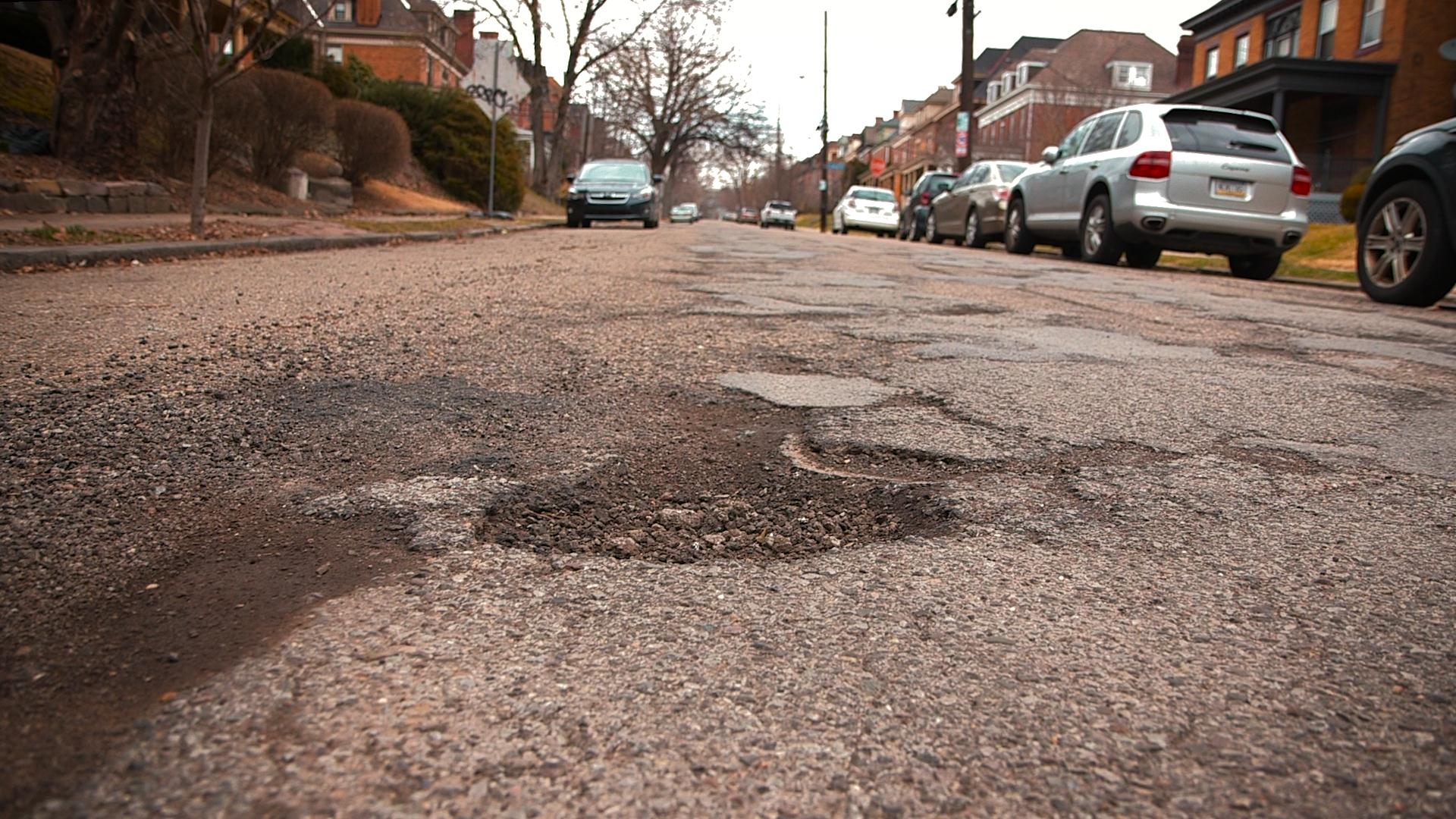Eyes on the Road CMU Researcher Uses Budget-Friendly Technology To Give Public Works a Big Picture of the Roads
Ann Lyon RitchieTuesday, March 15, 2016Print this page.

Pavement riddled with cracks, graffiti on stop signs, icy surfaces that need rock salt: municipalities must respond to road infrastructure problems that are changing constantly. Christoph Mertz, principal project scientist at Carnegie Mellon University's Robotics Institute, is researching how a smartphone could be a solution for all these issues, and more.
"It is essential to get eyes on every road, every year to stay ahead of what could become costly repairs," said Jason A. Dailey, director of public works for Cranberry Township, about 20 miles north of CMU's Pittsburgh campus. "Expensive services are available that have on-board tools and sensors, but these are typically out of the price range of the average community."
Mertz's smartphone-based road infrastructure inspection project examines ways a device as common as a smartphone can give municipalities a fast and inexpensive method for inspecting their roadways. In two basic steps, the technology collects images and then examines the data to identify areas that need care.
"Data collection and analysis could take a matter of days, where it would otherwise take months or even years," Mertz said.
Using computer vision algorithms, the system analyzes high-resolution images of the road and categorizes them. When looking for road damage, for example, it can quickly discover where the ratio of cracked to uncracked surfaces is high and flag the locations for repair. In other instances, it can find signage that is missing or damaged, or detect snow or slush on the road. Software displays the data using easy-to-read maps and visuals.
"Mertz had demonstrated a viable advancement that may bring inspection technology into the everyday operations, making it not only affordable, but practical," Dailey said.
A big appeal to Mertz's system is the simplicity of integrating it with existing procedures. For example, Mertz suggested mounting garbage trucks with smartphones in order to routinely assess the roadways. Similarly, snow plows with smartphones could provide real-time road conditions in winter, which Mertz has already pilot-tested with the Pennsylvania Department of Transporation.
Carnegie Mellon's Traffic21, which is part of Metro21, helps fund projects like this one and others in smart transportation. Its goal is to design, test, deploy and evaluate information and communications technology-based solutions to address the problems facing transportation systems. The institute fuels multidisciplinary collaboration in the area of transportation.
Nine students currently participate in the research and specialize in different aspects, from localization to optics. The data the team collects through the project may be useful for other transportation projects, such as research for autonomous vehicles.
"The work of Mertz is an ideal example of Traffic21's vision of research, development and deployment," said Stan Caldwell, executive director of Traffic21 and Technologies for Safe and Efficient Transportation (T-SET), a National University Transportation Center funded by the U.S. Department of Transportation. Both organizations have supported Mertz's research.
The Hillman Foundation helped launch Traffic21 in 2009, and the institute's focus has been to match the real-world problems of transportation practitioners with faculty and student doing innovative research.
In recent news, existing work conducted by Traffic21 and Metro21 was used as part of the City of Pittsburgh's application for the U.S. Department of Transportation's "Smart Cities Challenge." Pittsburgh was recently named one of seven finalists in the federal initiative, which will provide the winning city $50 million to build technology-based systems to address mounting transportation and transit challenges facing cities nationwide.
"The exciting stage is deploying the technology in the field, making our region a smart transportation living lab," Caldwell said.
Mertz's technology has been deployed with the City of Pittsburgh, Marshall Township, Cranberry Township and with the Pennsylvania Department of Transportation.
Although potholes will be a sign of spring this year, drivers can imagine a future with fewer bumps in the road thanks to emerging technologies for safer, more efficient transportation.
Byron Spice | 412-268-9068 | bspice@cs.cmu.edu
